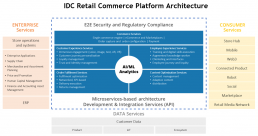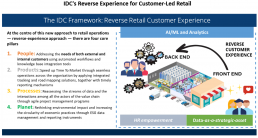Insights Are Good, Saving Is Better
You often see it on television: programs about people who are struggling financially. They run out of money at the end of the month, they can’t sell their house, they have a problematic debt burden, and so on. A common denominator is often the lack of insight into their own situation, and while coming up with ways to save money may not be very difficult, actually implementing and sticking to them is much harder.
I mean, it’s easy for an outsider to suggest that someone should get rid of their dog, but if that pet is their only source of comfort, it will take some effort.
The same goes for cloud costs: saving money is easier said than done. There are all sorts of great tools available from both cloud providers and third parties to help you understand your costs.
These tools provide various reports and dashboards, and even recommendations on which instances to remove or resize (rightsizing). With the right knowledge, you can also determine how to use discount options (reserved instances, savings plans, reserved capacity, etc.), how to manage licenses intelligently, and what you can do in your application architecture to save costs. And, of course, you can always turn off instances when you’re not using them.
All of this insight is great, but then comes the second part. Just as people have a hard time saying goodbye to their pets, users and administrators have a hard time shedding their old habits and ways of thinking. And that’s something cloud providers never talk about.
For example, consider turning off instances outside of working hours. In theory, this is an excellent way to save money, but instances are part of applications, which in turn are part of chains. It can happen that data exchange takes place in a chain outside of working hours.
Testing teams that are under a deadline may also need their environment outside of the predetermined working hours. And if environments are used in the management chain, they must also be available after working hours in case of an emergency. So savings are theoretically simple, but practice is more complicated. It can be done, but it takes a lot of effort.
Rightsizing is also less straightforward than it seems. Users and administrators are often hesitant to remove capacity: users see their performance decrease, and administrators see the risk of more outages because there is less excess capacity to handle issues. In the latter case, you need to analyze where these issues are coming from: a poor application can benefit from more capacity, but that is not a long-term solution.
If the roof is leaking, you can replace the bucket you use to catch the water with a mortar tub, but even that will eventually fill up. Ultimately, you’ll have to repair the roof.
So, objections can be raised for all types of savings. Eventually, you’ll need to adopt an approach that not only makes costs visible but also involves users and administrators, and leads to the right considerations on where to save on your cloud costs and where not to.
Don’t know where to start? Can’t figure it out quickly enough? IDC Metri has helped several organizations get started. Our specialists can help kickstart your cost-saving efforts in the cloud. Because understanding costs is one thing, but it’s only useful if they actually decrease.
Climate Change Resilience: A Cry for Help from My Hometown
I was born in Ravenna, on the east coast of Emilia-Romagna, one of the most liveable and prosperous regions in Italy. Emilia-Romagna is home to 7.3% of the Italian population. It accounts for 9.2% of GDP and 11.8% of agricultural production.
It headquarters globally successful firms in automotive, motorbikes, food production, ceramic tiles, textile and fashion, biomedical engineering, construction, woodworking equipment and much more. Unemployment is at 5.1%, well below the 2022 national average of 8.2%. Life expectancy is higher than the national average.
There are white sandy beaches, natural reserves in coastal wetlands, and beautiful hills and mountains, which combined with a rich heritage — Ravenna alone boasts eight UNESCO heritage sites — and amazing food and wine attract tens of millions of tourists every year.
Besides these material treasures, there is a unique way of living in Emilia-Romagna. And even more so in Romagna, where I grew up; there’s an old saying that you can tell if you are in the Romagna part of the region because when a stranger shows up at someone’s door, they are welcomed with a smile and a glass of wine. On the Emilia side, they’ll be equally warmly welcomed, but with a glass of water!
There is a sense of shared joy, a passion for life and a pride in belonging to one’s community. A shared sense of resilience that drives people to go through the hardness of life with a smile on their face, and always trying to put a smile on someone else’s. Because there is always a little bit of magic, even in the small things.
As Federico Fellini, the world-famous movie director and one of the most beloved children of our region, once said: “Life is a combination of magic and pasta.”
It feels good to be a Romagnolo. And to visit Romagna … unless you happened to be there in the first two weeks of May 2023.
Smart River and Water Management: Preparing for Foreseeable Disasters
After many months of drought, in the first 17 days of May 2023, Romagna was hit by as much rain as it usually gets in six months. In some areas this meant up to 400mm of rain in two weeks. To put things in perspective, one of the worst hit municipalities, Faenza, which is home to 60,000 people, experiences on average 760mm of rain a year.
The stereotypical rainy London gets 690mm a year. The result of this unusually heavy rain was that 23 rivers burst their banks, resulting in 50 floods; 305 landslides devastated hills and mountains, 14 people died and over 36,000 people were displaced from their homes. The estimated economic damage to homes, factories, farms and public infrastructure is north of €5 billion, with around €600 million just to rebuild public infrastructure.
Climate change is increasing the frequency and intensity of these extreme weather events. Long-term environmental sustainability actions, which are progressing way too slowly, will not be enough.
Resilience to short-term shocks is imperative. Money is not the problem; in fact, there is an estimated €8 billion available from the Italian COVID Recovery and Resilience Plan and the “Italia Sicura” (Safe Italy) plan to make public infrastructure more resilient. This, however, is at risk of not being spent, or not spent well, because of lack of planning, skill gaps, slow public procurement, and insufficient competencies and capacity to audit.
Technology innovation is not a silver bullet, but when implemented wisely it can help fill some of those gaps. The increasing availability and granularity of data from satellite images, IoT sensors, weather monitoring and forecasting models already tell us that Italy has the highest amount of rain in Europe, with 300 billion cubic meters a year.
Building permitting systems, public works inspection systems and other sources tell us that Emilia-Romagna was the fourth worst region in terms of soil consumption in Italy in 2021, including in areas at high risk of flooding. By building on the existing knowledge, collecting more data and turning the data into intelligent smart river and water management insights, governments, water utilities and the public could make better decisions across the disaster resilience life cycle, from mitigation to preparedness, from response to recovery.
- Mitigation: Governments can use a wide variety of tools to develop hazard maps that can identify areas most at risk and feed into planning and preparedness systems. Policymakers and building inspectors can feed intelligent insights into planning and operational simulation tools, such as digital twins, to simulate the impact of building code and permitting decisions to reduce soil consumption and require the use of more resilient building techniques and materials.
- Preparedness: The benefits of building flood resilient systems (dams, levees, flood walls and diversion canals, etc.) to protect natural systems such as wetland, marshes and beaches, and using resilient building techniques such as tiled pavements instead of concrete for parking lots and roads to increase water absorption, can be augmented by making these assets and tools intelligent. The intelligence from those systems can enable real-time or preventive decisions about diversion tactics, rather than reacting only when the flood is too close.
- Response: Real-time data from weather forecasting models, integrated with data from dam and river sensors, should be analysed to detect anomalies to automatically raise emergency alerts that can then promptly notify citizens, rather than having to rely on fire and police patrols roaming the roads of small rural villages and towns using loud speakers to tell citizens to evacuate homes or expecting mayors to post videos on social media hoping everybody pays attention, as happened in the past two weeks in Romagna. More intelligent use of data can also provide insights for command-and-control personnel to coordinate first responders and orchestrate the supply of food, clothes and medicine for shelters, instead of relying on emails, spreadsheets and phone calls.
- Recovery: Digital twins would allow evidence-based infrastructure planning decisions and monitoring the progress of investments aimed to rebuild infrastructure, therefore increasing speed and transparency of projects to avoid wasting time and money. AR/VR tools can help engineers conduct inspections when anomalies are detected.
The same technology infrastructure — with a few additions in terms of sensors and applications — will provide intelligent insights for other use cases, such as water conservation in dry seasons, leakage reduction, biodiversity protection in rivers, marshes and ports, sustainable water transportation, and water quality.
Only two days after the peak of the emergency, millions of euros, as well as food, clothing and other supplies, had been donated to flooded areas in Emilia-Romagna from all over Italy and beyond. Boosted by the typical Romagnolo spirit, spontaneous neighbourhood efforts have mushroomed to clean mud from houses, roads and farms. Beaches have already been cleaned for the upcoming tourist season. But that resolve to recover quickly should not allow us to forget what happened. We know what the future holds. Extreme weather events will happen, not only in well-known high-risk flooding areas, such as the Indian Subcontinent, Southeast Asia, and Pacific and Caribbean Islands, but also in traditionally safer regions of the world.
Technology innovation will be critical to climate change resilience. But technology alone will not be enough. It’s not enough to feel compassion to help when disaster happens. We need to invest in mitigation and preparedness measures that generate the highest long-term returns.
How the New European AI Act Will Impact the AI Market
AI Act: How Did We Get Here and Where Are We Now?
In April 2021, the European Commission submitted a detailed proposal of its plan to regulate artificial intelligence development and use in Europe: the AI Act. The AI Act’s goal is to ensure that the development and deployment of AI systems in Europe is safe, transparent and compliant with the EU’s fundamental rights and values ― protecting the public, while still fostering innovation.
The Commission adopted a “general approach” on a set of harmonized rules on artificial intelligence in November 2022, but rapid progress of the technology, together with the sudden wave of innovation in Generative AI systems, delayed the final discussion of the legislation as new amendments to cover the latest developments were explored. On May 11, the European Parliament committees approved the AI Act with a large majority in a vote that paves the way to the plenary vote in mid-June (June 14 as a tentative date).
Let’s now look at the main principles of the proposed regulation and how it will impact the AI market in the region.
Regulating the Development and Deployment of AI in the EU ― Key Aspects of the AI ACT
The proposal identifies three (+1) risk categories for AI applications and applies different restrictions and obligations on system providers and users, depending on the category of the application in question:
- Unacceptable risk: applications that involve subliminal practices, exploitative or social scoring systems by public authorities. Such applications will be banned.
- High risk: applications related to education, healthcare and employment, such as CV-scanning, ranking job applicants, will be subject to specific legal requirements (e.g., ensure transparency and safety of the systems, complying with the Commission’s mandatory conformity requirements). Providers of “high-risk” systems will have obligations to establish quality management systems, keep up-to-date technical documentation, undergo conformity assessments (and re-assessments) of the systems, conduct post-market monitoring, and collaborate with market surveillance authorities.
- Limited risk: this mostly includes AI systems such as chatbots that will be subject to specific transparency obligations (e.g., disclosing that interactions are performed by a machine, so that users can take informed decisions).
- Minimal risk: applications that are not listed as risky, nor explicitly banned are left largely unregulated (e.g., AI-enabled video games). Currently, this category covers the majority of AI systems used in the EU.
How Will the AI Act Affect the European AI Landscape?
The introduction of the European AI Act has sparked discussions on its potential impact on the adoption of AI technologies. Will this regulation hinder AI innovation in Europe? The answer is not straightforward, as it depends on various factors and the evolving landscape.
AI regulation may impose compliance costs, administrative burdens, and legal uncertainty on businesses and developers. Extensive testing, validation, and monitoring of AI systems may become necessary, which can be time-consuming and expensive. There might also be limitations on the types of applications, industries, data, or algorithms used in AI systems.
However, when assessing the direct impact on AI use cases falling under the regulated risk categories, the outcome is not overwhelmingly negative. When we at IDC built a data model to verify which and how many AI use cases will be directly impacted (we considered those that would fall into the above listed risk categories) the outcome was only modest, and we have not seen the impact, defined by possible lost revenue, to be worrying.
The compliance costs and administrative burdens could be challenging for SMEs and startups, though, which may inhibit competition in Europe if larger, more established providers find it easier to comply.
Industries like healthcare, public administration or finance are likely to face more stringent requirements due to their potential impact on human life and safety. Transparency, explainability, human oversight, and restrictions on the use of, for example, biometric identification technologies are some of the obligations that might be imposed. While these requirements may limit certain applications, they also aim to protect privacy and individual rights. However, it’s important to note that this regulation offers a list of exemptions, so if you are a provider for national security interests, you may not need to worry about that too much.
On the positive side, regulation has the potential to enhance wider trust and confidence in AI systems. This is crucial in countering overhyped pop culture-fed media narratives of AI as a threat. A trusted regulatory framework always reduces legal uncertainty and creates a level playing field for businesses, public institutions and consumers and citizens. Wisely designed laws will improve the quality and safety of AI systems and will first and foremost safeguard individuals.
The AI Act aims to encourage AI technologies that align with ethical and societal values that the EU strongly supports, such as transparency, accountability, and human-centricity. It wants to stimulate research and development in these areas and promote collaboration and openness among organizations and regions. By establishing common standards and best practices, the EU facilitates knowledge exchange and expertise sharing.
Conclusion
Looking at AI regulation through the lens of healthcare offers valuable insights. Healthcare regulations ensure safety, efficacy, and patient rights. They impose requirements on manufacturers to meet necessary standards. Similarly, AI regulations can ensure ethical and safe technology use while balancing innovation and protection.
While the potential impact of the European AI Act on AI adoption and innovation may present challenges, it also offers opportunities. By adhering to the regulatory framework, AI providers can navigate the landscape effectively, gain public trust, and promote responsible AI practices.
As the AI Act progresses, it is crucial to stay updated with the latest developments. At IDC, we will closely follow the progress of the AI Act and will continue publishing comprehensive research, providing deeper insights into its implications and potential impact as we approach the EU vote in June.
If you want to know more about this, please contact the team: Lapo Fioretti, Andrea Siviero, Neil Ward-Dutton or Ewa Zborowska
The Retail Commerce Platform: Why Retailers Need it, What's New and How to Embrace its Full Potential
The retail industry is a dynamic and ever-changing landscape that is constantly adapting to the needs of consumers and technological advancements. With the rise of omnichannel business models, retailers must cater to the demands of increasingly discerning customers who seek personalized experiences and convenient shopping options.
In this blog post, we will explore how retail commerce platforms (RCPs) are evolving to become instrumental in the seamless integration of the omnichannel customer journey and the personalization of the customer experience (CX) — both crucial for competitiveness in today’s retail industry.
The Retail Commerce Platform
The RCP is the backbone of retail operations, providing all the core capabilities that enable customer experience differentiation and seamless commerce. From customer experience to commerce services, employee experience, order fulfillment, and content optimization services, the platform is the key to success in today’s retail landscape.
Why the Retail Commerce Platform is Key for Today’s Retail Competitiveness
Customer experience is a top priority for retailers worldwide, and many feel the pressure to adopt experience-based business models. Through the RCP, retailers can prioritize investments in areas such as hyper-micro personalization and real-time contextual and immersive interactions and transform into CX-focused organizations to reinvent how omnichannel and headless commerce works. By combining commerce with interactive customer engagement, retailers can create more trustful lifetime valued connections with customers and associates, ultimately boosting sales.
The RCP enables retailers to focus on strategic planning, processes, programs, and technology-enabled-use cases, which IDC Retail Insights summarizes with the concept of Reverse Experience for Customer-Led Retail, to support today’s personalized and omnichannel customer journeys.
The RCP provides retailers with the tools to work on the 4Ps, or pillars, of the Reverse Experience for Customer-Led Retail, that is People, Products, Processes, and Planet, to address customer expectations (People), speed up time to market (Products), manage value-chain interactions (Processes) and ensure sustainable operations (Planet), and integrate the 4Ps through strategic planning.
Working with technology partners is key for retailers to advance their innovation journey aimed at the implementation of the essential capabilities, services, and innovative technologies of the RCP, to enable the Reverse Experience for Customer-Led Retail and take advantage of current and future market opportunities.
Unsurprisingly, retailers are moving rapidly toward RCP adoption. Over 60% of retailers globally have already implemented or are currently implementing the platform, while 33% plan to invest in it over the next 12 to 24 months, according to IDC’s 2022 Global Retail Operating Models Survey.
Key Trends in Today’s Retail Commerce Platform
But how is the RCP evolving? To answer this question, IDC Retail Insights assessed more than 20 RCP software and service providers. Here’s what we found out:
- Modern RCP frameworks are becoming more flexible and modular, allowing retailers to become more agile and adopt plug-and-play capabilities.
- Modern RCPs enable the seamless integration of front end (e.g., POS) with back-end operations (e.g., inventory management) for better omnichannel experience and operations management.
- Artificial intelligence (AI) capabilities continue to expand in RCPs to deliver better customer experiences and strengthen operations efficiency.
- There is continuous integration of RCP with systems including customer data platforms (CDPs) that help make the most of the extensive data pool available in today’s highly digitized retail operations.
Three Actions for Successful Commerce Platform Expansion
The RCP is essential for retailers to compete in today’s fast-paced environment and prepare for the future. By enabling piloting, implementing, and scaling innovation at speed, RCPs are the key to success in the retail industry. Retailers looking to adopt or expand their commerce platform’s capabilities should consider the following:
- Define a clear digital road map and accelerate RCP investments to achieve your company’s strategic objectives.
- Prioritize API and microservices-based architectures for the rapid expansion of the retail commerce platform’s capabilities and seamless integration with third-party services.
- Strengthen AI capabilities for customer experience personalization and omnichannel commerce orchestration, which are vital for today’s retail operations.
If you want to know more about how the RCP is evolving and what are the core offerings, strengths and challenges of RCP technology software and service providers, check out IDC MarketScape: Worldwide Retail Commerce Platform Software Providers 2023 Vendor Assessment and IDC MarketScape: Worldwide Retail Commerce Platform Service Providers 2023 Vendor Assessment. They are insightful research pieces that can help you stay up-to-date and develop your RCP implementation and expansion strategy.













